Fitch Waterman Taylor (August 4, 1803 –July 24, 1865) was an American minister, chaplain, and author.
He was the son of Col. Jeremiah and Lucy Taylor, of Middle Haddam, Connecticut, and was born August 4, 1803.

The Middle Haddam Historic District is a historic district in the town of East Hampton, Connecticut. It encompasses the village center of Middle Haddam, a riverfront community founded in the 17th century on the east bank of the Connecticut River. It was an important port on the river between about 1730 and 1880. Its layout and architecture are reflective of this history, and by the geographic constraints of the local terrain. The district was listed on the National Register of Historic Places in 1984.
He went to New York City at the age of fifteen, with a mercantile life in view, but a change in his religious views led him after two or three years to enter on a course of study in preparation for the ministry of the Protestant Episcopal Church. He graduated from Yale College in 1828. His first charge was"in the Episcopal Diocese of Maryland. In 1841 he received the appointment of Chaplain in the U. S. Navy, which he held twenty-four years, being-at the time of his death the Senior Chaplain in the service. In the course of his sea service he made a voyage around the world on the USS Columbia, an account of which he published under the title of The Flag Ship. He also published other works, and at his death left behind him several volumes in manuscript.

Yale College is the undergraduate liberal arts college of Yale University. Founded in 1701, it is the original school of the university. Although other schools of the university were founded as early as 1810, all of Yale was officially known as Yale College until 1887, when its schools were confederated and the institution was renamed Yale University.

The Episcopal Diocese of Maryland forms part of Province 3 of the Episcopal Church in the United States of America. Having been divided twice, it no longer has all of Maryland and now consists of the central, northern, and western Maryland counties of Allegany, Anne Arundel, Baltimore, Calvert, Carroll, Frederick, Garrett, Harford, Howard, and Washington, as well as the independent city of Baltimore.

The first USS Columbia of the United States Navy was a three-masted, wooden-hulled sailing frigate of the US Navy, rated for 50 guns. She was built at Washington Navy Yard. Her keel was laid in 1825, but as was typical of much Navy construction during this period, she was not launched until much later, on 9 March 1836.
He died in Brooklyn, L. I., July 24, 1865, aged 62 years.

Brooklyn is the most populous borough of New York City, with an estimated 2,648,771 residents in 2017. Named after the Dutch village of Breukelen, it borders the borough of Queens at the western end of Long Island. Brooklyn has several bridge and tunnel connections to the borough of Manhattan across the East River, and the Verrazzano-Narrows Bridge connects Staten Island. Since 1896, Brooklyn has been coterminous with Kings County, the most populous county in the U.S. state of New York and the second-most densely populated county in the United States, after New York County.
 This article incorporates public domain material from the Yale Obituary Record .
This article incorporates public domain material from the Yale Obituary Record .
This page is based on this
Wikipedia article Text is available under the
CC BY-SA 4.0 license; additional terms may apply.
Images, videos and audio are available under their respective licenses.
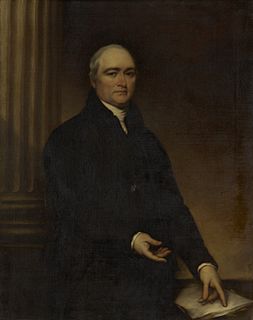
Timothy Dwight was an American academic and educator, a Congregationalist minister, theologian, and author. He was the eighth president of Yale College (1795–1817).

William Graham Sumner was a classical liberal American social scientist. He taught social sciences at Yale, where he held the nation's first professorship in sociology. He was one of the most influential teachers at Yale or any other major school. Sumner wrote widely within the social sciences, with numerous books and essays on American history, economic history, political theory, sociology, and anthropology. He supported laissez-faire economics, free markets, and the gold standard. He adopted the term "ethnocentrism" to identify the roots of imperialism, which he strongly opposed, and as a spokesman against it he was in favor of the "forgotten man" of the middle class, a term he coined. He had a long-term influence on conservatism in the United States.
Rev. James Smith Bush was an American attorney, Episcopal priest, religious writer, and an ancestor of the Bush political family. He was the father of business magnate Samuel Prescott Bush, grandfather of former U.S. Senator Prescott Bush, great-grandfather of former U.S. President George H. W. Bush and great-great-grandfather of former U.S. President George W. Bush and Governor Jeb Bush.
Sir Joshua Girling Fitch was an English educationist.

Alonzo Potter was an American bishop of the Episcopal Church in the United States who served as the third bishop of the Diocese of Pennsylvania. Potter "identified himself with all the best interests of society."
Francis Russell Nixon was the first Bishop of Tasmania.
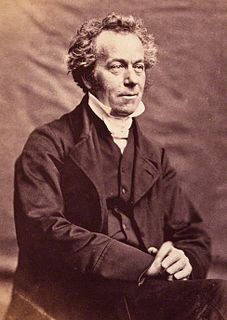
William Jacobson was Regius Professor of Divinity at Oxford University (1848–1865) and Bishop of Chester (1865–1884).
Angus Dun was a noted United States clergyman and author, who served as the 4th Bishop of the Episcopal Diocese of Washington in Washington, DC.

Leo Jozef Suenens was a Belgian prelate of the Roman Catholic Church. He served as Archbishop of Mechelen-Brussel from 1961 to 1979, and was elevated to the cardinalate in 1962.

Abraham Jarvis was the second American Episcopal bishop of the Episcopal Diocese of Connecticut and eighth in succession of bishops in the Episcopal Church. He was a high churchman and a loyalist to the crown.
Peter R. Gimbel was an American filmmaker and underwater photojournalist.
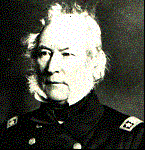
George Campbell Read was a United States Naval Officer who served on Old Ironsides during the War of 1812 and commanded vessels in actions off the Barbary Coast and India. Read eventually rose to the rank of rear admiral.

Henry Mackenzie was Bishop of Nottingham from 1870 until 1877. He became the first suffragan bishop in the Church of England since 1608.
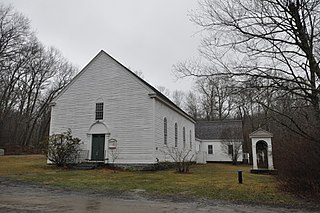
Emmanuel Episcopal Church is an historic church building at 50 Emmanuel Church Road in Killingworth, Connecticut.
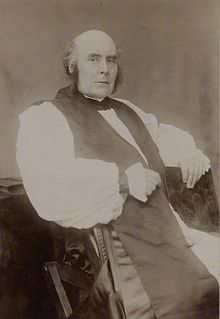
Robert Samuel Gregg MA, DD (1834–1896) was a 19th-century Anglican Archbishop.
John Marsh was an American minister and temperance advocate.
John Moses Morris was an American minister, author, and newspaper editor.
Thomas Williams was an American Congregationalist minister and author.

Alexander MacWhorter, DD was an American clergyman.
Walton Wesley Battershall was a Priest of the Protestant Episcopal Church. He was a reverend at St. Peter's Church in Albany, New York, until his retirement.





![]()










